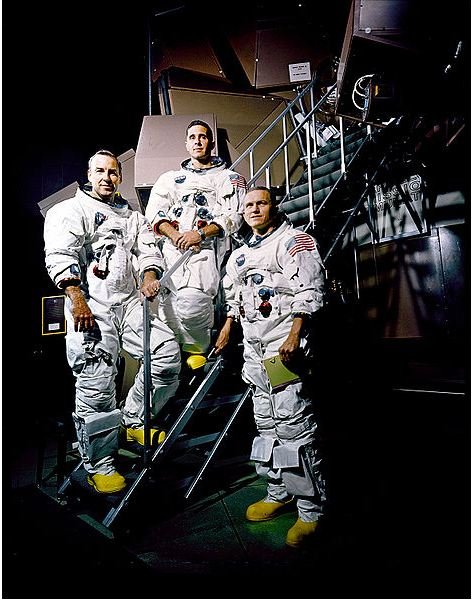First Manned Orbit of the Moon Missions - The Apollo 8 Mission
Overview of the First Moon Orbit
The first manned orbit of the Moon missions was Apollo 8. The three-man voyage took the crew from the safety of the Earth’s surface and eventually the orbital plane of the Moon. It was the first mission to travel beyond the confines of low Earth orbit (LEO) and established the possibility of landing on the lunar surface. Mission Commander Frank Borman led pilots James Lovell and William Anders on the six-day mission that set a number of firsts. The trio became the first people to see the far side of the Moon with human eyes, as well as the first to see Earth away from LEO.
Timeline of the First Manned Orbit
Apollo 8 was launched on December 21, 1968 aboard a three-stage Saturn V. The craft first entered LEO and then made the trek to the Moon. It took three days to make the voyage to lunar orbit. Once there, the crew circled the satellite for 20 hours, making three cycles around the Moon. During this time, the crew observed Christmas Eve from space, even reading verses from the Book of Genesis on a live television broadcast. Once the vehicle returned to Earth, the crew spent two and a half days in orbit before finally making reentry. They splashed down in the Pacific on December 27, ending the first manned orbit of moon missions and beginning the long run of Apollo successes.
Above right: Earthrise. (Supplied by NASA; Public Domain; https://upload.wikimedia.org/wikipedia/commons/d/dc/AS8-13-2329.jpg)
Near Disasters for Apollo 8
Apollo 8 was faced with a number of challenges during its voyage to the Moon. The mission itself quickly fell behind schedule after takeoff. By hour seven, it was nearly two hours delayed, forcing the ship to partake in maneuvers to prevent damage to the heat shielding. Shortly after the voyage to the Moon began, Commander Frank Borman took a sleeping pill, which is believed to have made him sick. He repeatedly vomited and was subject to diarrhea, much of which ended up floating around the cabin. The final problem arose when James Lovell accidentally erased data from the computer, causing it to think it was at the same position as the beginning of the flight. The crew had to manually enter data in order to adjust its position for reentry. Despite all these challenges, the mission of Apollo 8 was a success.
Crew of the First Manned Moon Mission

The first manned orbit of the moon mission was commanded by Frank Borman and piloted by James Lovell and William Anders. Borman and Lovell had both made previous trips into space, three and two times respectively. For Anders, this was the first time he was granted the right to voyage beyond the Earth. Only Lovell was lucky enough to get another chance at a moon mission, becoming the commander of the ill-fated Apollo 13 mission. Unfortunately, he would never get a chance to touch down on the surface, as Apollo 13 faced technical issues and could not land. Ironically, the backup crew for Apollo 8 featured the famous astronauts who would themselves eventually become the first people to touch down on the lunar surface: Neil Armstrong and Buzz Aldrin.
Above left: Apollo 8 Crew. (Supplied by NASA; Public Domain; https://upload.wikimedia.org/wikipedia/commons/6/6e/Apollo_8_Crewmembers_-_GPN-2000-001125.jpg)
Highlights of the Apollo 8 Mission
The first manned orbit of the moon was a rousing success for NASA and captured the attention of the country in the midst of turmoil. The crew became the first humans to pass through the radiation belt surrounding the planet, an occurrence which was of particular interest to scientists. They also were the first people to leave LEO and also peer on the dark side of the moon with human eyes. Once they returned to the safety of Earth, they were named Time magazine’s “Persons of the Year,” highlighting the end of a year that saw an increase in political dissent from the war in Vietnam and general attacks on the American psyche.
Resources
“Apollo 8” NASA (https://nssdc.gsfc.nasa.gov/planetary/lunar/apollo8info.html)
“Apollo 8 Mission” USRA (https://www.lpi.usra.edu/expmoon/Apollo8/Apollo8.html)
This post is part of the series: Great Moments in the Exploration of the Moon
Since the dawn of human civilization, mankind has looked to the Moon in awe and intrigue. During the late 20th century, humans finally had a means by which to explore the surface of the planet both with men and machines.
